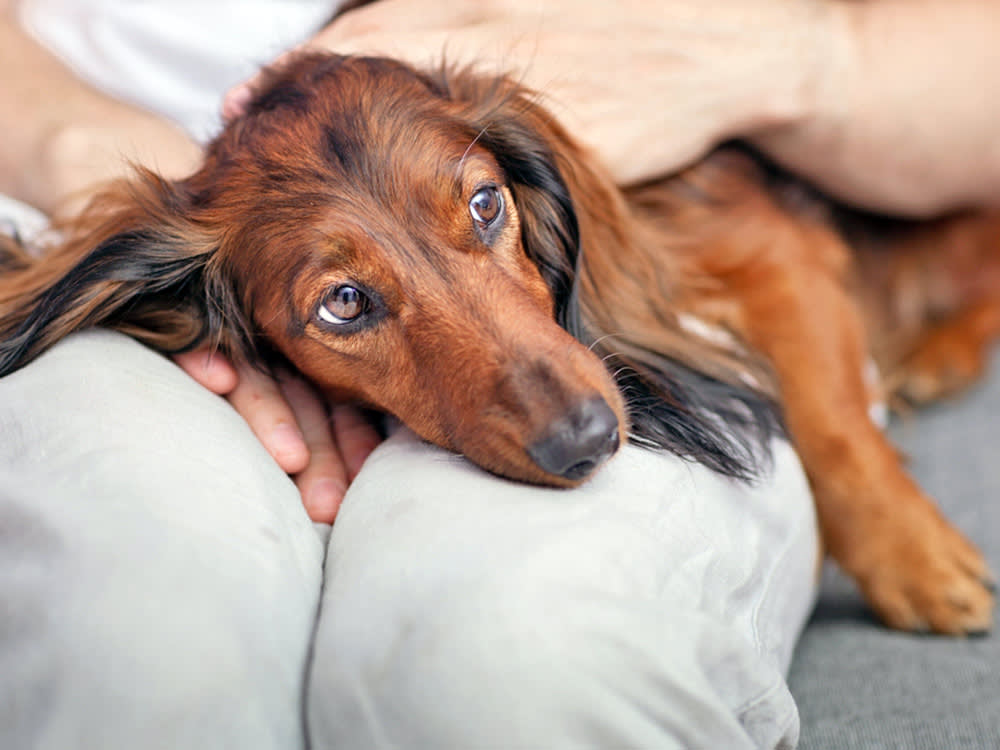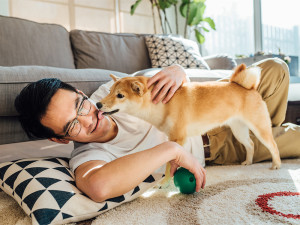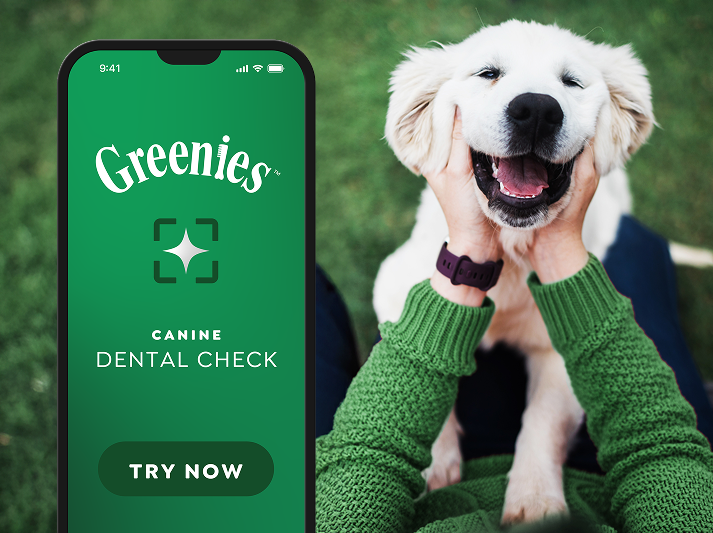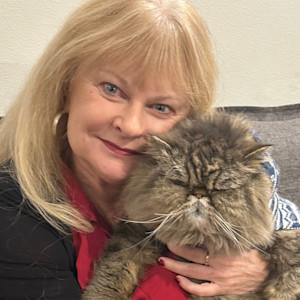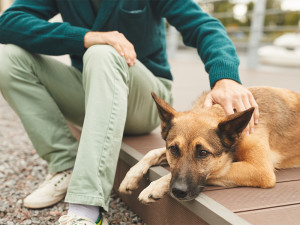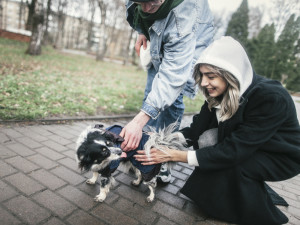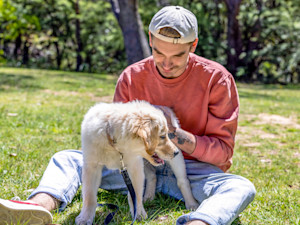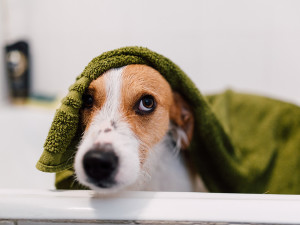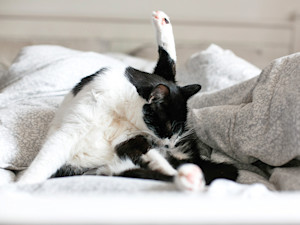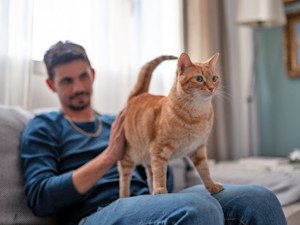How to Empty Your Dog’s Anal Glands at Home Safely
Everything you need to know, even if you don’t want to.
In This Article:
Understanding Dog Anal Glands Common Signs Your Dog’s Anal Glands Need Emptying Steps to Safely Empty Your Dog’s Anal Glands When to Seek Veterinary Assistance
If you’ve had a dog before, then you probably know anal glands exist, but you may not know enough about them to attempt to empty them. If you’ve never had a dog, you probably don’t even know what they are. Well, you’re about to learn all about them, what they are, why they exist, how to tell they need to be emptied, and how to empty them.
Snap a pic of your pup’s teeth, and GREENIES™ will help you spot potential signs of oral health issues.
Understanding dog anal glands
Learning how to empty your dog’s anal glands at home can be a helpful skill for dog parents, especially if your pup suffers from recurring issues. While it may seem unpleasant, the process can provide fast relief for your dog and prevent more serious health problems.
But first, let’s cover the basics.
How much do you spend on your pet per year?
What are anal glands?
Anal glands, also called anal sacs, are two small, pea-sized glands that are located just inside a dog’s anus at roughly the 4 o’clock and 8 o’clock positions. These glands are lined with oil glands (sebaceous glands), and their foul-smelling, oily secretions are unique to each dog and, therefore, can serve as a scent marker or identification system.
Under normal circumstances, the anal glands empty when your pup poops, as pressure from the feces passing through the rectum helps squeeze out the fluid.
Why do dogs have anal glands?
Before domestication, dogs in the wild used these natural scent markers to communicate with one another. This natural scent is why dogs are often seen sniffing each other’s butts — it’s essentially their version of a handshake.
Today, however, domestication, different diets, and anatomical variations have led to difficulties for some dogs in expressing their anal sacs naturally, making it necessary to provide some manual assistance.
Common signs your dog's anal glands need emptying
Dogs without an anal gland problem have sacs that empty automatically when the dog poops. Some dogs, however, require their glands to be manually expressed periodically. Being aware of the signs of full or impacted anal glands is crucial for maintaining your dog’s comfort and health.
Behavioral signs
Scooting: If your dog is dragging their rear end on the floor, the number one thing that could be causing this behavior is a full anal gland. The dragging behavior is a natural attempt to relieve the pressure or irritation caused by full anal glands.
Licking or biting the anus: Likewise, if your pup is licking or biting at their rear, that’s another sign of discomfort.
Restlessness or difficulty sitting: Your dog may shift positions or refuse to sit if the anal glands are full.
Sudden changes in behavior: A typically well-behaved dog may become irritable or sensitive around its hindquarters.
Physical signs
Swelling or redness near the anus: Inflamed tissue around the anus may indicate an impaction or infection.
Fishy odor: As emphasized earlier, there is no smell as foul as anal sac secretions. Some people say it smells fishy. If you notice this odor, the glands may need to be expressed.
Brownish or yellow discharge: Leaking from the anus may be noticeable on bedding, carpets, or your dog’s coat.
Steps to safely empty your dog's anal glands
If your dog’s anal sacs get too full occasionally, you may take your dog to the vet so the vet or a technician can express them. If they fill frequently, however, you may want to try expressing them at home. Before you do, you may want to ask your veterinarian or veterinary technician to show you how the first time; in fact, it’s essential to proceed with care, so the first time you express anal glands, it’s wise to do so in the presence of your vet or technician.
These are the steps your vet will likely walk you through.
1. Position your dog properly.
Choose an appropriate location where it’s OK to be messy, such as a bathtub, outdoor space, or an area lined with absorbent towels. You may want to wear gloves and an apron for protection.
You can place a small dog on a raised surface, such as a grooming table or counter, but larger dogs should be standing or lying down on their side. It’s helpful to have a second person to hold the dog steady and keep them calm.
2. Locate the anal glands.
This is probably the most challenging part. Some dogs have anal glands that open on the rim of the anus, therefore being fairly visible at the 4 o’clock and 8 o’clock positions. Others are more difficult to find because they’re farther into the anus.
Put on a pair of disposable gloves and gently lift your dog’s tail. If you’re right-handed, use your right thumb and index finger to press on either side of the anus gently. The anal glands will feel like small, firm lumps. The size can vary depending on whether they’re full or not.
3. Apply gentle pressure.
Once you've located the glands:
Place a tissue, paper towel, or gauze pad over the anus to catch the expressed fluid. This is a crucial step; otherwise, you’ll end up with secretions all over your clothes, face, and even your hair.
Using gentle but firm pressure, press inward and slightly upward toward the anus with your thumb and forefinger.
If you’re doing it correctly, you should see a brown, yellow, or grayish liquid (sometimes thick) squirting out. The smell is quite strong and unpleasant.
Tips:
Do not use excessive force. If the glands don’t express with gentle pressure, stop and consult a veterinarian.
Only express glands externally. Internal expression should be left to veterinary professionals due to a higher risk of injury.
4. Clean the area.
Once the glands have been emptied, wipe the area thoroughly with unscented baby wipes or a clean, damp cloth. Wash your hands, dispose of gloves and used tissues safely, and clean any surfaces or tools you use. Due to the smell, you’ll probably want to dispose of the gloves and used tissues outdoors.
When to seek veterinary assistance
While you can learn to express anal glands and perform manual expression at home occasionally, some glands require that a veterinarian express the sacs.
Seek professional help if:
You notice blood, pus, or an unusually thick or discolored discharge, as these may be signs of infection or abscess and should be evaluated by a vet immediately.
You’re unsure how to express the glands safely.
Your dog seems to be in pain.
The glands are too swollen, firm, or painful to touch.
The area becomes red and hot, or your dog develops a fever.
Your dog continues to experience issues despite regular expression.
Veterinarians can perform internal expressions, prescribe antibiotics if an infection is present, and, in rare cases, recommend surgery if necessary. Additionally, your vet can look for an underlying cause that may be contributing to chronic impaction. Sometimes, a change in diet is all that’s needed.
References
“Anal Sac Disease.” Veterinary Teaching Hospital, hospital.vetmed.wsu.edu/2021/12/03/anal-sac-disease/opens in new tab.
Collins, Brian. “Anal Sac Diseases.” Cornell University College of Veterinary Medicine, 1 Mar. 2023. https://www.vet.cornell.edu/departments-centers-and-institutes/riney-canine-health-center/canine-health-information/anal-sac-diseasesopens in new tab
